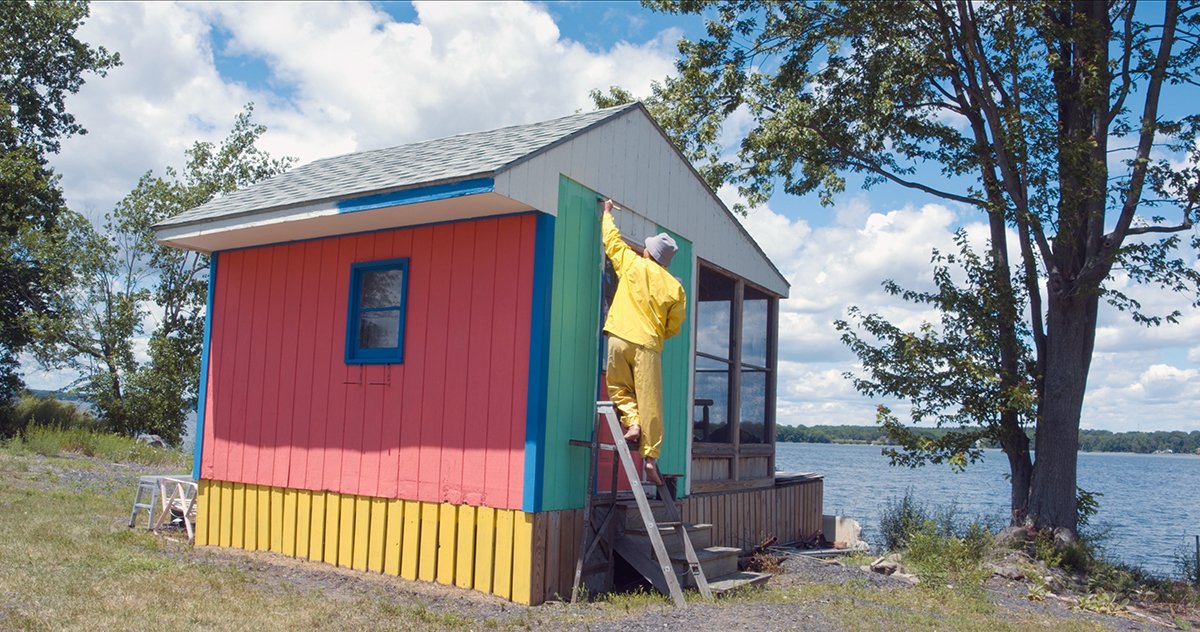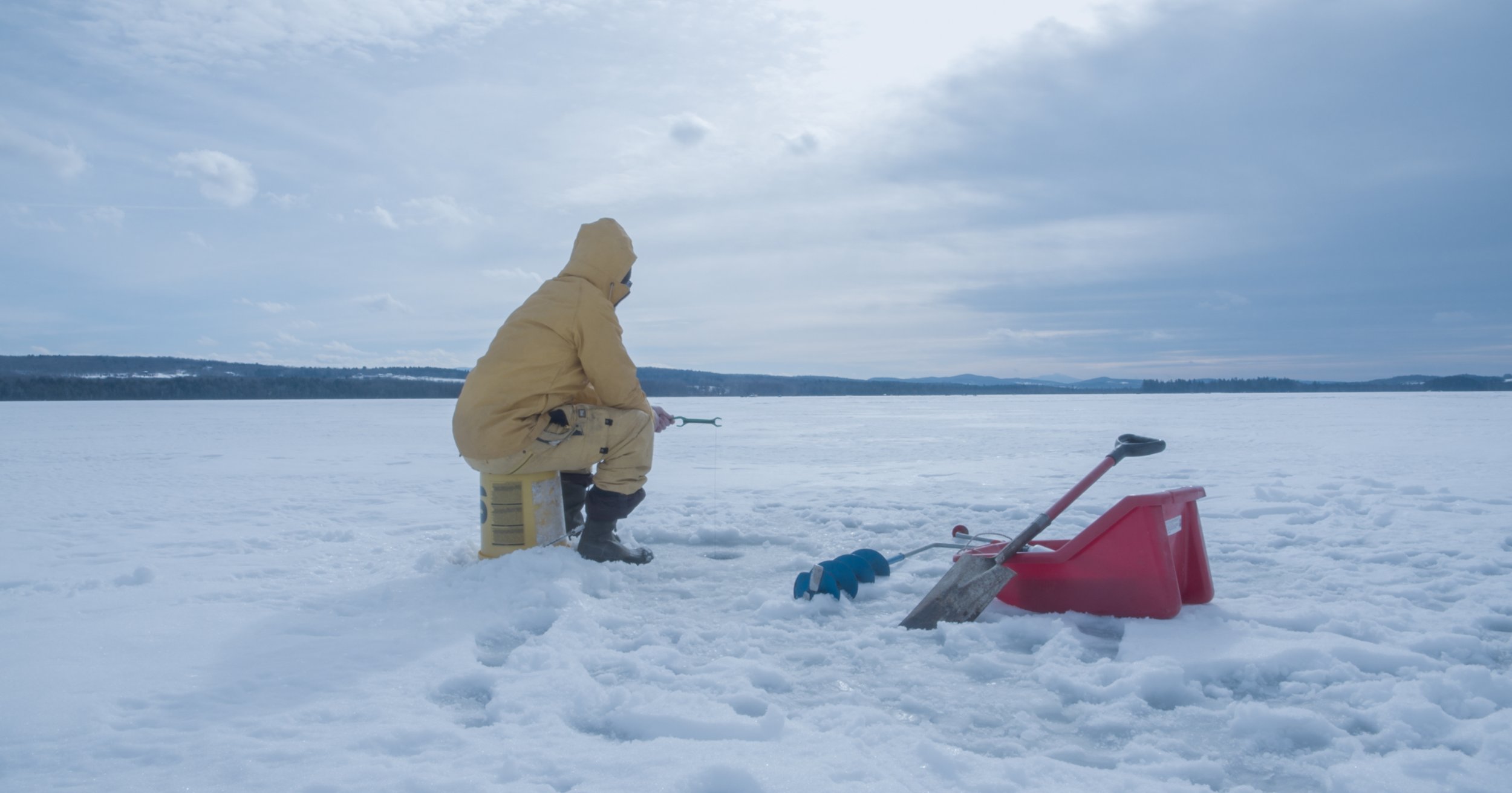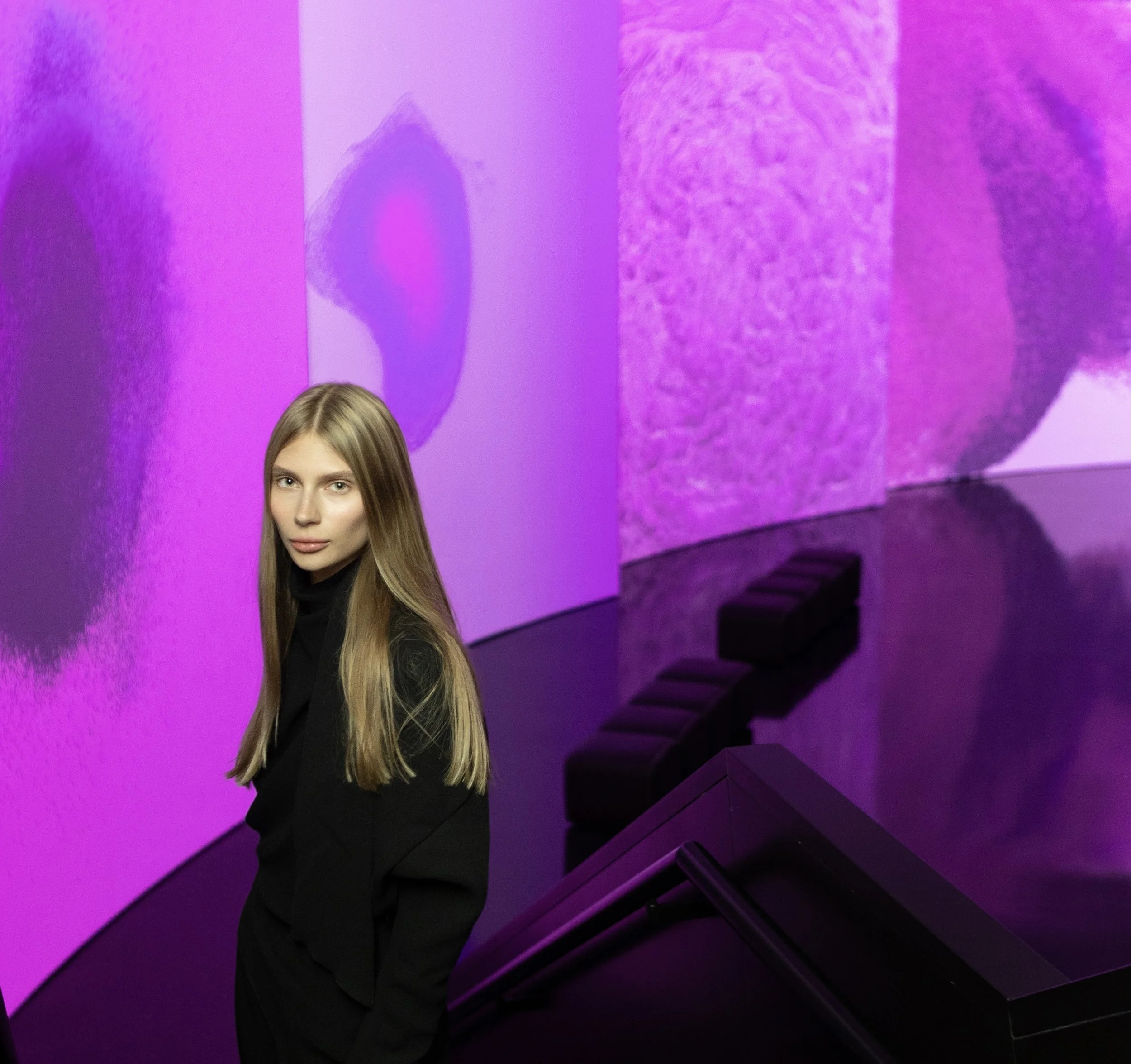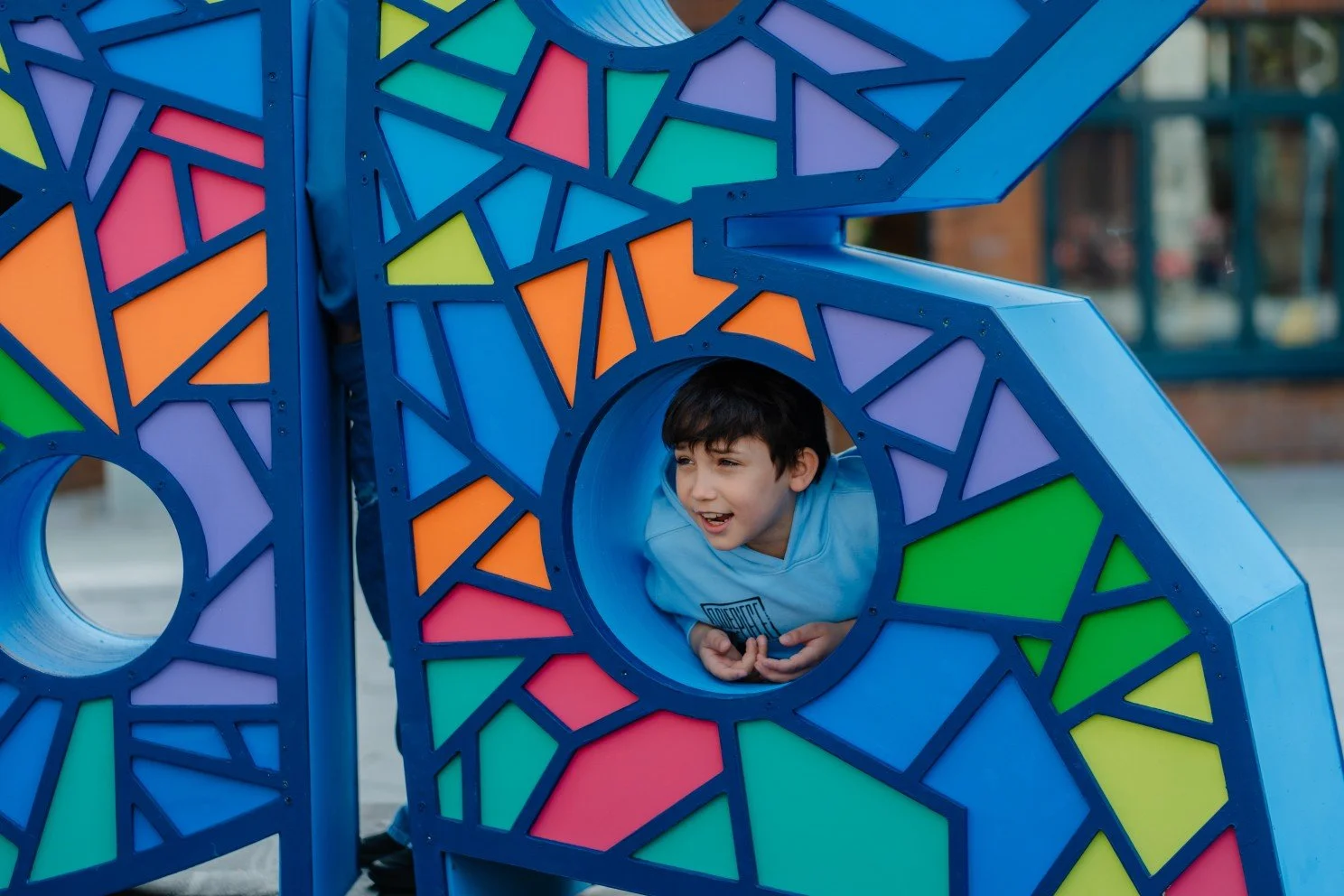INTERVIEW | Alina Orlov
10 Questions with Alina Orlov
Alina Orlov's work is characterized by her focus on the inner world of the individual and the unconscious mind. She explored themes of identity, memory, and perception through her use of non-linear narratives, symbolism, and surreal imagery. In her work, she explores themes of love, and loss, seeking to capture the complexities and contradictions of human experience.
Orlov was born in the Soviet Union and immigrated to Israel as a child during the mass migration of the 1990s and currently lives between the USA and Tel- Aviv. This cultural background has had a significant influence on her art, including her use of fairytale concepts, theatrical costumes, and appreciation for the beauty and allure of glass. Having experienced migration and estrangements in her personal life, she creates installations that reveal societal patterns and secrets.
Through multimedia installation, she speaks from a vulnerable, hyper-intimate point of view. She inquires into questions on gender, performativity, sexuality, mutable identities, and the quest for joy.
In her video work, she uses a dreamlike quality, often featuring non-linear narratives, symbolism, and abstract imagery. She is also deeply interested in the role of the body in the video, and many of my works feature dance, singing, or other physical movements as a central element.
Alina Orlov - Portrait
Characters often are not categorized as people but as others: places, objects, animals, and things. Orlov's own body, as well as the bodies of others—naked, painted, and in elaborate costume—sometimes navigate strange, resistance, and liberation settings. She is drawn to cold, magical environments, often using them as the backdrop/ character for her work. She finds that there is a great mystery in the frozen landscape.
Orlov seeks to use imagery that is particularly vulnerable and feminine, in a way that is also persecuted. The videos she creates are interspersed with sculptural objects and assemblages, notably hand-blown glass. Glass provides a means to explore the fragile and ethereal aspects of place and identity. Every object appears to be a frozen shell left from a now-missing memory: handmade trinkets; a dresser full of wooden figurines; broomsticks; glass-coated paper. The objects' memories are beautiful and empty.
The sculptural works are also "power objects" as they contain multitudes of displacement, unsettling relationships, and estranged selves depicted in the videos. They operate as tools that bring out the darker, more obscure aspects of the characters—and by proxy, us as viewers.
She received her MFA from the School of the Art Institute of Chicago (2020), and holds a BFA with honors from the Bezalel Academy of Design and Arts in Jerusalem (2015).
Throughout her career, Alina has been recognized with various awards and grants and has participated in numerous solo and group exhibitions in locations around the world, including the YARAT Contemporary Art Space in Baku, Azerbaijan, the Sullivan Galleries in Chicago, USA, and the Rosenfeld Gallery in Tel Aviv, Israel.
Forest of Ornaments, Installation (glass, video, fabric), 2019 © Alina Orlov
INTERVIEW
Let's start talking about you. When did you first realize you wanted to be an artist?
There was a moment when I was a child, with friends walking to a dance class. We were talking about what we wanted to do when we grew up. They were both serious and somewhat grownup, saying something I don't remember, but it was a 'serious' job that they wanted or thought they wanted. I said I wanted to be a painter like Van Gogh. They laughed and said I would not choose that because when I grow up, I will decide I want to make money. In high school, my dad wanted me to be a chemistry major, but I chose art. As I have gone, the practice of art has always been the constant for me - where some of my happiest memories with other people have come from. That's the early days of how I got to where I am now as an artist.
And what path did you follow to become one?
I was never really the best at doing art or winning any awards for doing it. I just really liked it. I began my artistic career with a Bachelor of Fine Arts (BFA) from the Bezalel Academy of Art and Design. In my first year, I was in an etching class, and we had an individual critique. The professor told me my work was something worth hanging in a museum, but I had no confidence and that I needed to fully commit to it, to own it. So I came back the second year and was fully committed. While studying there, I did an exchange program at Slade in London. While in London, I saw works by artists I had only read about. It was the first time I had the opportunity to view major works of art and be in an art center. After graduating with my BFA, I completed several residencies, but the most meaningful one for me was in Baku, Azerbaijan, where I worked on a project called J'accuse. The project was significant to me as it drew from my cultural and geopolitical origins. In 2018, I started my Master of Fine Arts (MFA) at the School of the Art Institute of Chicago in the Film, Video, Animation, and New Media department. And so it goes.
I set Frank Barcelona on fire, Still image, 2021 © Alina Orlov
What was the biggest lesson on your journey to becoming an artist?
Nothing is mine and things don't come from a single origin. I learned that when I got to my MFA. Prior to my MFA, I thought that if I had something that could help a friend, I thought that we were all in competition, and I wouldn't share it. When I met my friends and peers in my MFA in Chicago, I learned that I had misunderstood the entire point of collaboration and becoming an artist. I learned that there is no scarcity of ideas, only a small coincidence of ideas meeting anyone's needs at a certain time and place. So if time and place are uncoordinated, then I should let my ideas flow through and include as many in them as I can - so that it will cover a larger area with my peers.
You were born in the Soviet Union but moved to Israel and eventually to the US. What did these countries teach you? And how do they influence your art?
I was born in Moscow and my first language was Russian. I have a deep love for old Russian music and literature. My artistic approach is often searching for something from my Russian heritage, something I can't quite define but feels like I got lost along the way - through my parents' generation and their parents. The current ongoing conflict has made it difficult for me to understand what Russia means to me, and this has made it challenging to feel a sense of belonging. For me, Russia represents the culture and its art forms, such as beautiful ballet and theater.
My family fled from the Soviet Union to Israel when I was three years old. Israel is where I spent my childhood and parts of my adult life, but I have a complex relationship with it. On the one hand, it gave me and my family safety, while on the other it is not a place that gives me a passion for the world. With both of those places full of conflict, I believe that the main influence on me is a nomadic approach to life and to art - and asking what happens to the concept of identity when migration is constant.
Partly because of this feeling of not belonging, I decided to pursue my graduate studies in the USA. In the USA, I learned the effect of a place that is so large that you can drive and drive, and it feels like it never ends. This sense of freedom was liberating, and the always-changing nature, small-town diners, and roadside motels were all sources of inspiration for my art.
Forest of Ornaments, still from video, 2019 © Alina Orlov
What about your inspiration? What artists influence and inspire your work the most?
There are so many artists that I appreciate... I am particularly fond of Kenneth Anger, Pipilotti Rist, Mika Rottenberg, Eva & Adele and the Chapman brothers, and many more contemporary artists that I admire.
How would you describe your creative process? Where do you start when creating a new work?
I tend to begin my work with an intuitive approach. I do not have a specific narrative in mind, but I often have certain scenes that I want to film. It may be accurate to say that my video work is built up through small performances that are layered together. I usually see or want to shoot a 'scene' - I think of a performance action, and I see in my mind what I want it to look like. So I'll see a scene in my head, and I'll want to create and capture it with video. They are based on performance. Then after I've captured that idea about a scene with performance and setting, I'll put it in my collection of other scenes. It is not a linear narrative-based way of working. It is very much like collecting patches or fragments of moving imagery that I have in my head. Sometimes I think of them like recollecting memories, when you remember something they are like patches and not necessarily linear, more like associations of different stories or experiences.
Cambrian ring, ongoing video, 2022 © Alina Orlov
Cambrian ring, ongoing video, 2022 © Alina Orlov
You work with multimedia installations and incorporate sculpture and video. How does your approach to art change depending on the medium you use?
I believe there is a distinct contrast between my approach to creating a video work and my approach to creating sculptures. My method for working on a sculpture tends to be more structured and follows a specific idea that I try to execute as closely as possible. On the other hand, when working on a video, I have a more fluid and open-ended process, where there is no clear narrative but rather a collection of fragments that are gradually edited together to form the final video.
Oftentimes with the glass, the idea for an object usually comes from something that I think will support the video. I utilize glass as a way to realize the video in space. The glasswork is always something that exists in real life - a representation of something familiar. They are a copy of something but made of a different material, obviously, a material that is very sensitive and has its own unique characteristics and structure.
What's the essential element in your art?
One of the essential elements is color. There is always a color in mind as a sort of key for me when I am creating. Colors are always representational for me as an undertone throughout my video and sculptural work. I use colors as a way to layer meaning into the visual parts of my work. As I said, recollecting or creating memories and dreams is part of my process, and in my dreams, I don't remember the colors. But, when I remember things that actually happened, I always only remember small details, like the color of a meal or the smell of something. So color in my work is a way of connecting things together.
J’accuse, still from video, 2017 © Alina Orlov
You live between the USA and Tel Aviv. What do you think about the art community and market? And what are the differences and similarities between these two locations?
I think the answer to this question might be in another question. How many art communities are there in the US, and how many are there in Tel Aviv? My art community in Chicago is very supportive, and members of the community are always working on new things, projects with new people, and receiving opportunities that might take them to other US-based communities or abroad, all of the time. In the Tel Aviv community, it is not as dynamic or active just because of the difference in scale, but that doesn't mean that the supportiveness and inclusiveness are any differences between the two. Both have wonderful people and incredibly talented artists. The US just has a much larger market, but not only in terms of the 'art market' where people buy art, more like the market in terms of the movement of artists: going to residencies, collaboration, and so on.
Finally, what are your plans for the future? Any exciting projects, exhibitions, or collaborations you are looking forward to?
I am currently working on a new video piece that I am very excited about, with the working title' Cambium Ring', in reference to the growth of a tree. It is a visual poem based in northern Vermont about rural life. The poem features a character dressed in yellow. They do simple things; climb a tree, ride a bike, go fishing, and do other small activities. The actions of the yellow man are accompanied by casual conversations with locals about farms, haying, wood, and fishing.






















